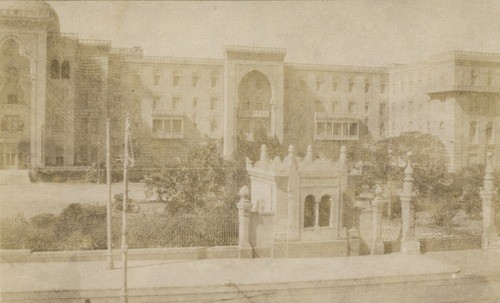
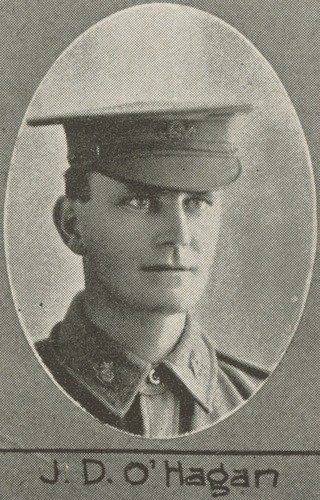
Dated 27 January and written from Cairo, the letter described a sumptuous hotel - the Palace Hotel in Heliopolis, about 4½ miles west of Cairo, which had been re-purposed as the 1st Australian General Hospital. Several large hotels were commandeered for military use, and referring to the Palace Hotel, where his corps were quartered, he wrote:
It is said to be the most beautiful hotel in Egypt. We have been told that it cost £2,500,000 to build. The King of the Belgians, with an English and a Belgian syndicate, built the hotel about three years ago. It was to be run as a casino, and the idea was to rival Monte Carlo. The syndicate was unable to get a license for the casino, and the hotel has been a white elephant. The war interfered with the tourist season this year—it should be in full swing now—and the very costly carpets and furniture have been carefully stowed away. It is possible that the King's room, which cost £1000 to furnish, with a bed, a chest of drawers, and a washstand, will be made into an operating theatre, and there is talk of providing 800 beds for the hospital, which will be one of the very best.
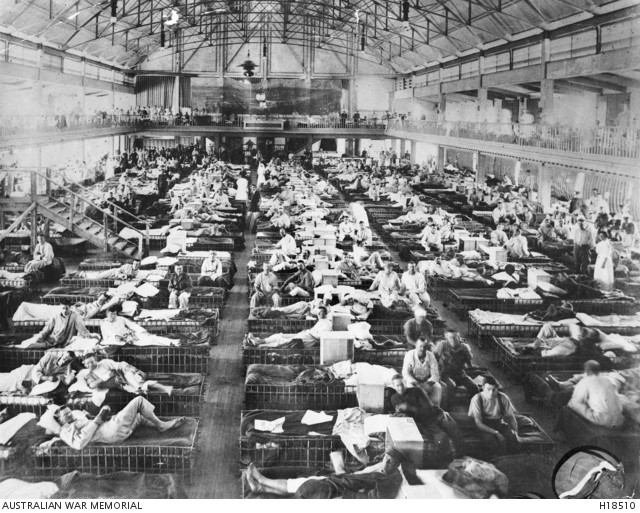
Heliopolis, Egypt, c.1915. The interior of the auxiliary hospital which formed part of the No.1 Australian General Hospital (1AGH), located in the former Heliopolis Palace Hotel, Australian War Memorial, H18510
As to the size of the building, if you put the Treasury and Executive buildings together they would require the largest part of Parliament House to make the group equal in size to this palace. And the exquisite marble, and alabaster, and granite! The ballrooms and reception rooms are things of rare beauty, and when you climb the marble stairs, of which there are many flights, and look down on the marble, and granite, and alabaster, and the richest of stained electric lights and clusters, it needs little imagination to call the building a palace. Some of it is like an artist's dream. If I had any knowledge of architecture I might attempt a description of the palace within and without, but can only say it is wonderfully beautiful. There are perhaps 10,000 electric lights throughout the building, and, of course, all the appointments are on a lavish scale. We have hot and cold water baths and showers, and are comfortably settled in rooms with tables and chairs. The nurses and doctors occupy some of the rooms on the first, second, third, and top floors, and have the most perfect accommodation. We, of inferior ranks, have the servants' quarters on the basement, and are the envy of our less fortunate comrades in the other hospital, who are in tents pitched on sand in which you sink up to the ankles. The corporals have a private sitting room, where one can read and write at ease. Altogether the conditions are too comfortable for active service, but I suppose we should be glad on that account.
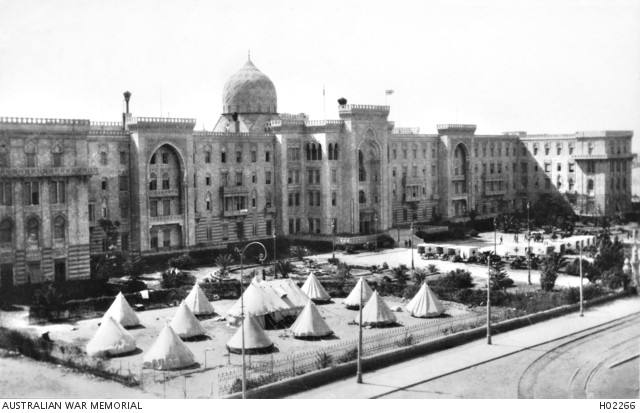
Heliopolis, Egypt, c.1915. An exterior view of the Heliopolis Palace Hotel with army tentage and ambulance wagons in the foreground, Australian War Memorial, H02266
I motored over from here to Mena yesterday on further business. Barney S—— drove me in one of the "Courier" ambulance waggons, and the run, about 30 miles, was enjoy- able The road is excellent, being of asphalt, and before reaching the pyramids it runs in a straight line through a 5 or 7 miles avenue of bean trees. There is not a hill on the whole 30 miles— Cairo really being built on the sand, which is all level. We were away from Heliopolis from 10 a.m. to 3 p.m. Captain Jack Fitzgerald, of Wickham-street, is paymaster of the forces. My friends in the infantry camp were out on march, and I did not have time to go right through the camp.
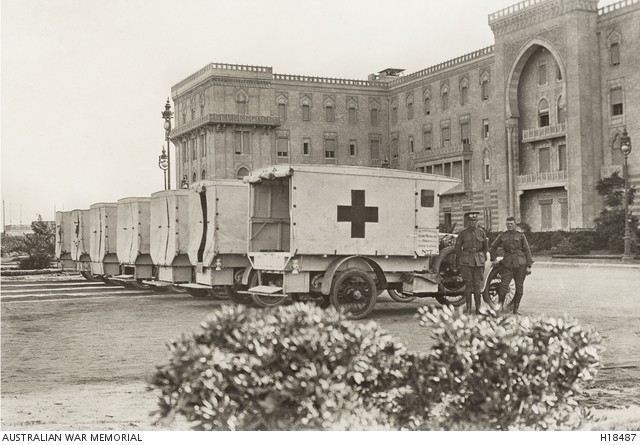
Cairo, Egypt. 1914. Australian Army Medical Corps ambulance vehicles in line outside No 1 Australian Army General Hospital in the Heliopolis Palace Hotel, Australian War Memorial, H18487
Corporal O'Hagan also mentioned Mena House, where the 2nd General Hospital was located about 12 miles east of Cairo. He stated:
It is a sight to see the tents stretching for miles along the sand, and quite a township has sprung up close to the camp. The Light Horse are encamped in another direction from Cairo, at Ma'adi.
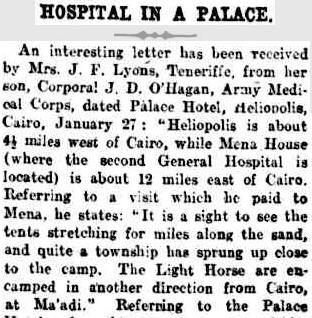
Comments
Your email address will not be published.
We welcome relevant, respectful comments.